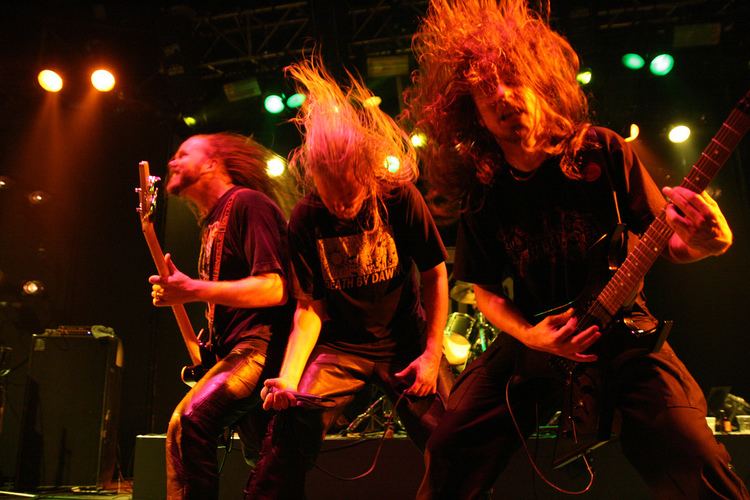 | ||
Headbanging is violently shaking one's head in time with music, most commonly in the rock, punk, heavy metal music, and dubstep genres. Headbanging is sometimes used by musicians on stage.
Contents
Origin
The origin of the term "headbanging" is contested. It is possible that the term "headbanger" was coined during Led Zeppelin's first US tour in 1969. During a show at the Boston Tea Party, audience members in the first row were banging their heads against the stage in rhythm with the music.
Headbanging is more common in classic rock bands like Status Quo and other heavy classic rock bands.
Furthermore, concert footage of Led Zeppelin performing at the Royal Albert Hall January 9, 1970 on the Led Zeppelin DVD released in 2003, the front row can be seen headbanging throughout the performance.
Ozzy Osbourne and Geezer Butler of Black Sabbath are among the first documented headbangers, as it is possible to see on a band's concert in Paris, 1970.
Lemmy from Motörhead, however, said in an interview on the documentary The Decline of Western Civilization II: The Metal Years, that the term "Headbanger" may have originated in the band's name, as in "Motorheadbanger".
Ian Gillan, frontman of Deep Purple, when asked if he invented headbanging, said: "That’s a definite possibility", although he claimed that "it was not really head banging — more hair floating".
The practice itself and its association with the rock genre was popularized by guitarist Angus Young of the band AC/DC.
Health issues
In 2005, Terry Balsamo, Evanescence guitarist, incurred a stroke which doctors postulated may have been caused by frequent headbanging. In 2007, Irish singer and former Moloko vocalist Roisin Murphy suffered an eye injury during a performance of her song "Primitive" when she headbanged into a chair on stage. In 2009, Slayer bassist/vocalist Tom Araya began experiencing spinal problems due to his aggressive form of headbanging, and had to undergo anterior cervical discectomy and fusion. In 2011, Megadeth guitarist Dave Mustaine said that his neck and spine condition, known as stenosis, was caused by many years of headbanging. Slipknot Sampler Craig Jones once suffered from whiplash after an extended case of powerful headbanging.
Several case reports can be found in the medical literature which connect excessive headbanging to aneurisms and hematomas within the brain and damage to the arteries in the neck which supply the brain. More specifically, cases with damage to the basilar artery, the carotid artery and the vertebral artery have been reported. Several case reports also associated headbanging with subdural hematoma, sometimes fatal, and mediastinal emphysema similar to Shaken Baby Syndrome. An observational study comparing headbanging to non-headbanging teenagers in a dance marathon concluded that the activity is associated with pain in varying parts of the body, most notably the neck, where it manifests as whiplash.
